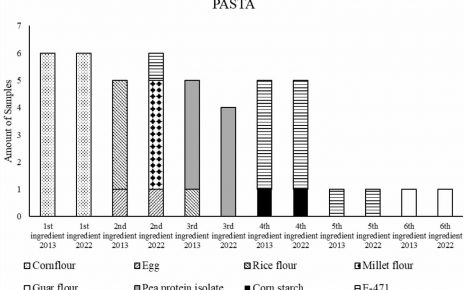MADRID — Specialists who have been exploring the causes of excess weight and obesity among children and teens say the rates are “alarming.” They are warning against the consequences of obesity and are discussing the main challenges it poses to primary care pediatricians.
During the 19th Conference for Pediatric Updates 2023 held by the Spanish Association of Primary Care Pediatrics (AEPap), speakers mentioned that excess weight, including overweight and obesity, is the most common chronic noncommunicable disease among children and teens. In Spain, excess weight affects 40.6% of this demographic, and future predictions are not encouraging.
The pandemic played a significant role in this, explained María José García Mérida, MD, a pediatrician with the Gastroenterology and Nutrition and Health Education groups of the Spanish Association of Primary Care Pediatrics. “The tightest lockdown phases requiring social distancing and mandatory use of face masks in many areas, even outdoors, contributed to a near total elimination of physical activity among this demographic. They were spending more time at home, generally being sedentary, and were consuming greater amounts of unhealthy foods high in fats and sugars,” she said.
This trend has stabilized now that short- and medium-term measures against the pandemic have been lifted. “Excess weight continues to rise among young people and teens,” Marta Castell, MD, pediatrician with the Campanar-Valencia Healthcare Center and member of the Gastroenterology and Nutrition Group at the AEPap and of the Maternal Breastfeeding and Nutrition Committee of the Spanish Association of Pediatrics (AEP), told Medscape Spanish Edition. “Globally, rates are expected to rise, and our country will be especially affected. Before the pandemic, data from the 2019 Aladino Spanish study showed that obesity and excess weight were stabilizing when compared with data collected in 2015.”
Poor Prospects
“However, preliminary data from 2023 for the pediatric demographic show overweight and obesity levels worsening again among the Spanish population and worldwide, according to data from the World Health Organization [WHO] for 2019,” said Castell. “It has been further observed that developing countries show rising trends, with higher overweight and obesity rates. At the same time, data show increasing malnutrition among children.”
Castell pointed out that excess weight represents a pandemic in the 21st century. A multidisciplinary and institutional approach is needed to improve these statistics and reduce excess weight among children and teens in the years and decades to come, she said.
The pediatricians who addressed this topic at the conference were careful to emphasize the short-term health problems in childhood and the long-term problems in adulthood that go along with excess weight. “Boys and girls with obesity are at greater risk of developing obesity [in adulthood]. Therefore, without proper intervention in this demographic, in coming years we will see increasingly more and earlier complications from obesity, which previously only appeared in adults, especially hypertension, peripheral insulin resistance (before developing type 2 diabetes), and cholesterol disorders,” said Castell.
Experts agreed that healthcare services — specifically pediatric primary care centers — occupy a strategic position and play a vital role.
“In Spain, pediatric primary care is the initial point of contact with the healthcare system for early detection and treatment of childhood excess weight and obesity. It is typically detected during health screenings of healthy children, and treatment is started. However, any visit for any other reason during which excess weight is identified can be the starting point,” said Castell.
“Most cases of childhood excess weight and obesity will be managed and followed up by primary care pediatricians. In special cases, such as severe obesity, cases involving metabolic complications (hypertension, cholesterol and triglyceride disorders, or diabetes), and cases where medications or even bariatric surgery may be indicated, they will make referrals to pediatric nutrition units,” she added.
Collaboration With Nutritionists
Regarding the strategies for prevention and detection of excess weight among children and teens, Castell said that performing a thorough interview to detect cardiovascular risk factors (such as parents with a history of high blood pressure, diabetes, or dyslipidemia, among other conditions) and a physical examination of the patient are recommended.
“Also, nutritional recommendations based, for example, on Harvard’s Healthy Eating Plate or on increasing the daily intake of fruits and vegetables and reducing the intake of simple sugars and animal fats provide indispensable tools for managing obesity and excess weight. On this point, future collaboration between pediatricians and pediatric nutritionists in primary care could contribute toward improving healthy eating among children and teens with obesity,” said Castell.
She explained that routine visits and long-term follow-up are required for proper treatment of these conditions. “Visits typically occur every 1 to 2 months over a 12-month period or even longer. It is therefore necessary to set aside enough time during the visit for pediatricians and nurses to check the patient’s progress, review physical activity and dietary recommendations, and identify other related problems. These may be either physical or psychological issues, such as eating disorders, low self-esteem, anxiety, depression, et cetera, that may be related, as well as problems at school or in the social or family setting.”
Castell explained that one of the main problems contributing to childhood obesity rates in Spain is the low level of awareness among parents about the magnitude of this problem. She said,
“We need to raise awareness about this problem among parents, because the longer it takes before it is addressed, the more the diagnosis and treatment of the disease are delayed, which encourages the development of additional complications. We must remember that, according to results from the COSI initiative and the Gasol Foundation’s PASOS study, Spain leads Europe with the highest prevalence of excess weight in children, and the incidence of obesity has doubled in the past 20 years.”
Misperceptions Among Parents
“Furthermore, abdominal obesity has increased by 30% over the past 10 years, and obesity and excess weight have especially seen an increase among girls (22% in 2019 in contrast to 16% in 2011; data from the PASOS study). As seen in the 2019 Aladino study, up to 88% of parents whose children have excess weight believe that their weight is acceptable. For children with severe obesity, 67% of their parents say that their children have only mild excess weight. It is therefore clear that there is a skewed level of awareness about this problem among the parents and guardians of children and teens with excess weight,” said Castell.
She made the following observation: “It is becoming increasingly common to see children and teens with excess weight at pediatric primary care visits. We are therefore normalizing this condition and, as a consequence, delaying its diagnosis and treatment. That’s why primary care visits and health programs are vital, but the media and institutions must also become aware of the problem.
“There are currently many public health initiatives attempting to head off the rising trend of these statistics in Spain, but there is still lots of work to do to achieve the goals on this topic, as established by the WHO for 2030,” she added.
Castell indicated that early treatment is among the greatest challenges that primary care physicians currently face when approaching childhood obesity. “It should begin from the earliest months of infancy, when it is vital to support mothers who wish to breastfeed, because this positively contributes toward preventing childhood obesity. Follow-up during the first few years is also important when complementary feeding is introduced. Most important is the development of good, healthy habits, like avoiding highly processed foods, encouraging fruit and vegetable intake, increasing the duration of physical exercise, and limiting screen time during the first few years of life.
“However, the real challenge lies with teens, since they are a demographic that comes in less frequently for pediatric checkups. This makes it more challenging to encourage them to manage their weight, get more physical exercise, or reduce their screen time,” she explained.
Castell pointed out the need to reinforce patient care during visits, especially among this age group, to continue intervention programs, and to perform multidisciplinary follow-up. She also emphasized the importance of getting schools and the media, including social media, involved to achieve better results.
“In this respect, we have observed that good results seem to be achieved among teens and older children when the use of new technologies is combined with nutritional intervention and follow-up visits,” Castell concluded.
Castell has disclosed no relevant financial relationships.
Follow Carla Nieto of Medscape Spanish Edition on Twitter @carlanmartinez and on LinkedIn.
This article was translated from the Medscape Spanish Edition.
Source: Read Full Article



